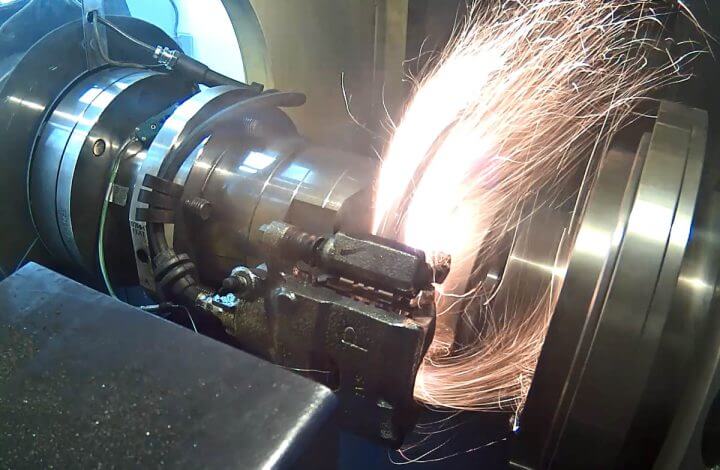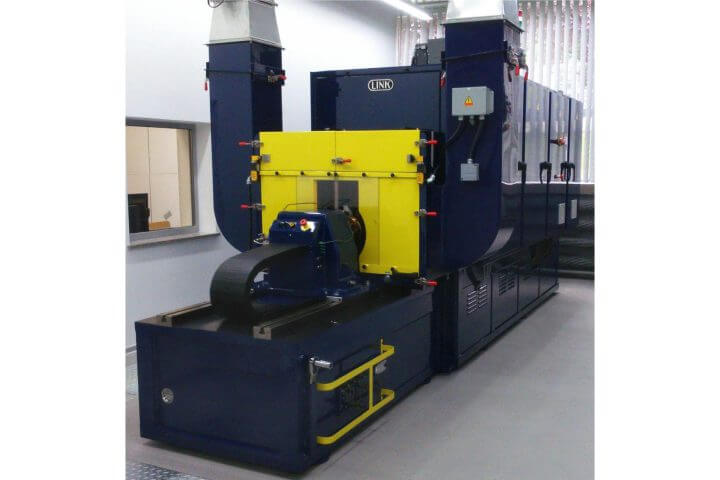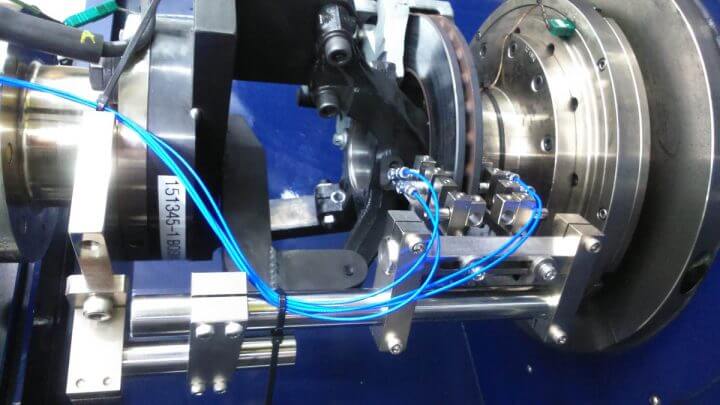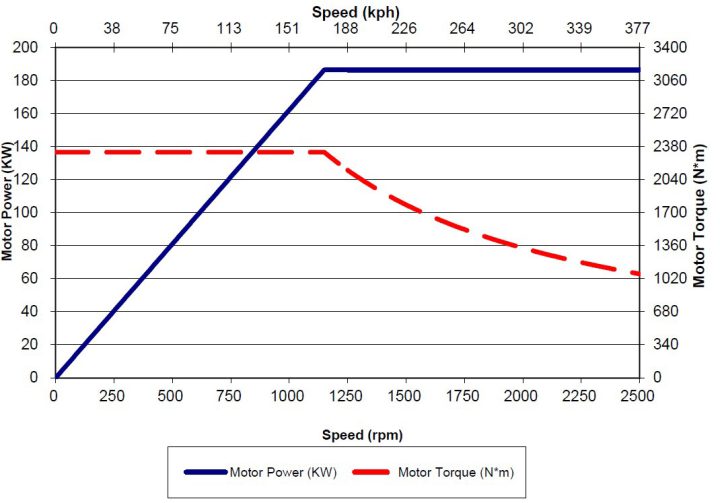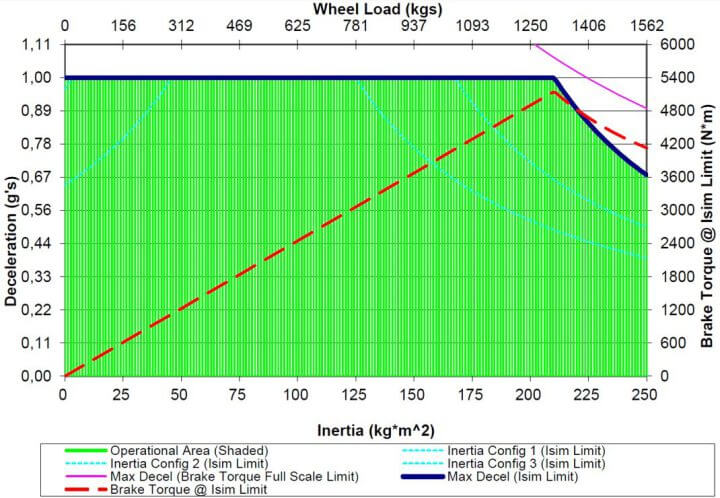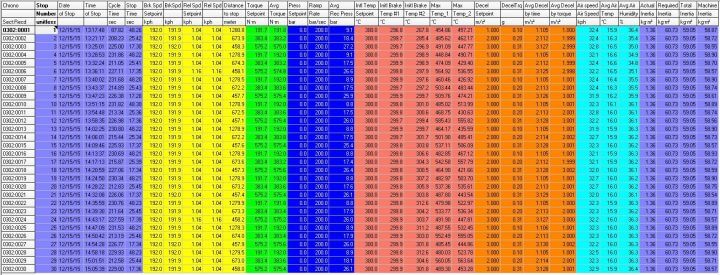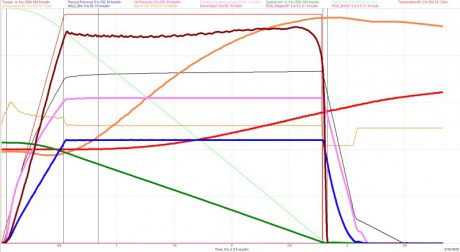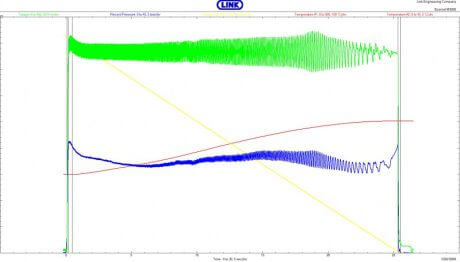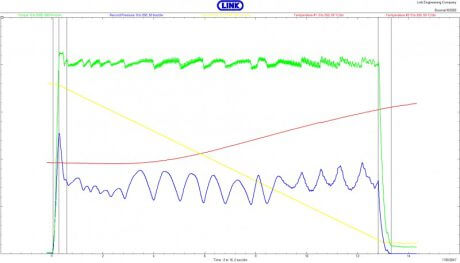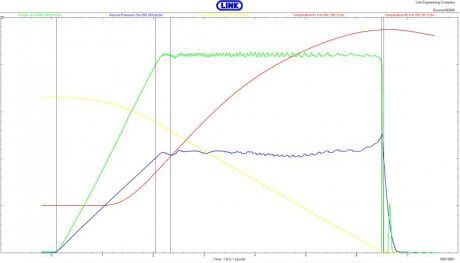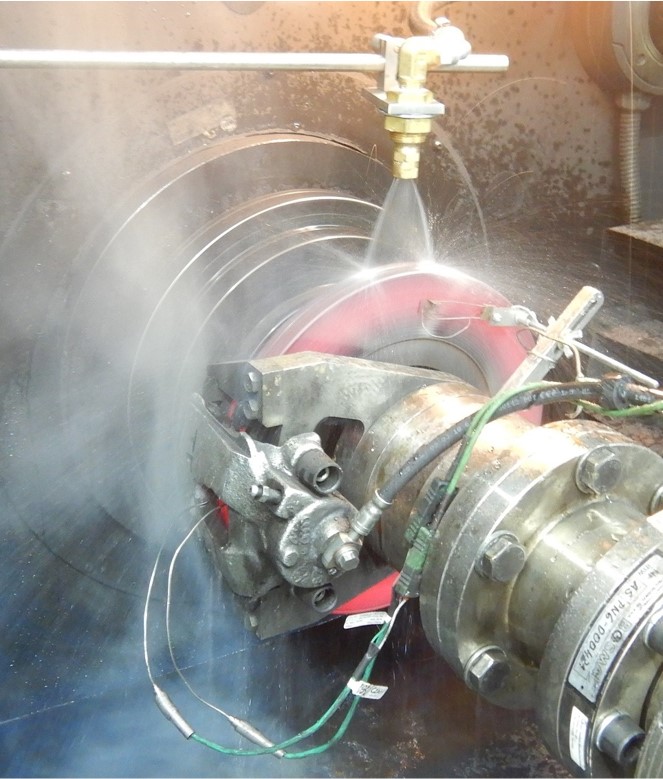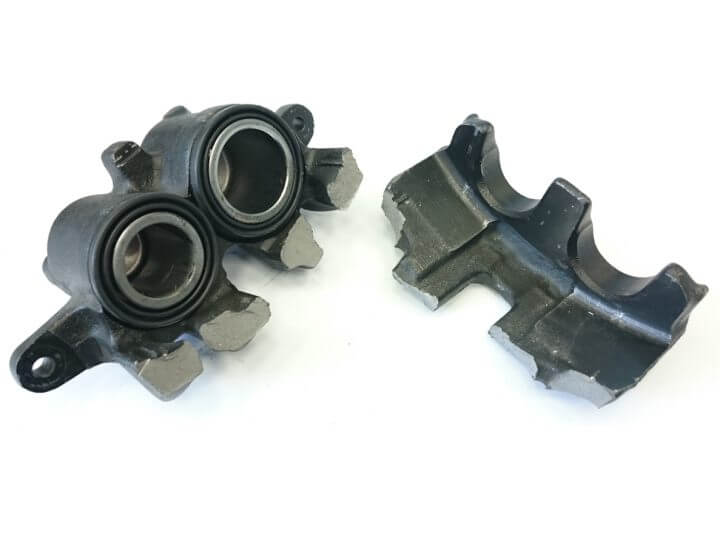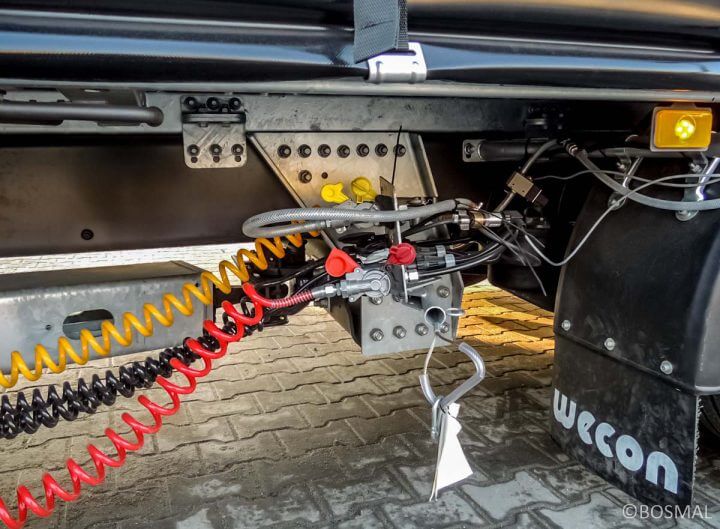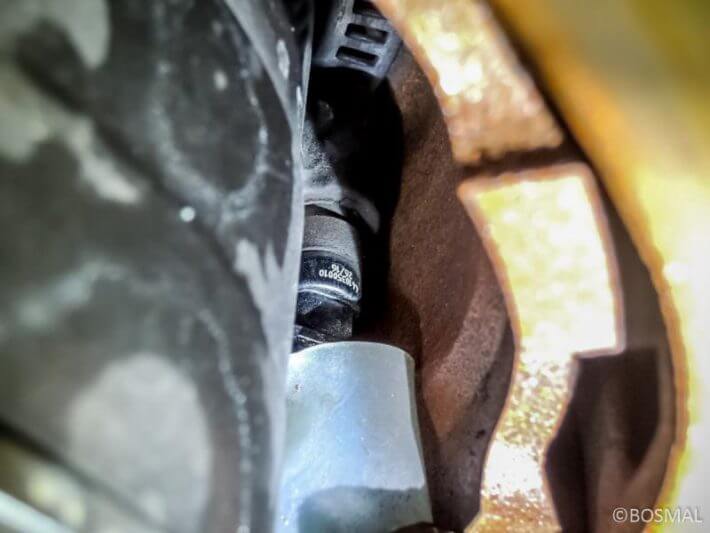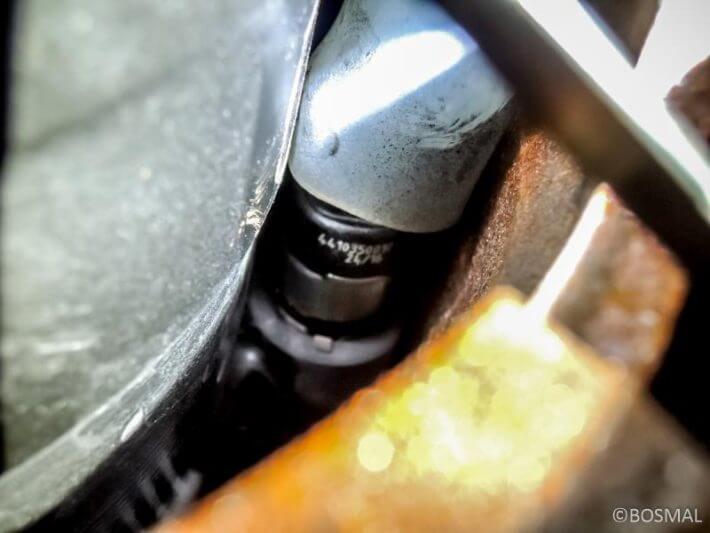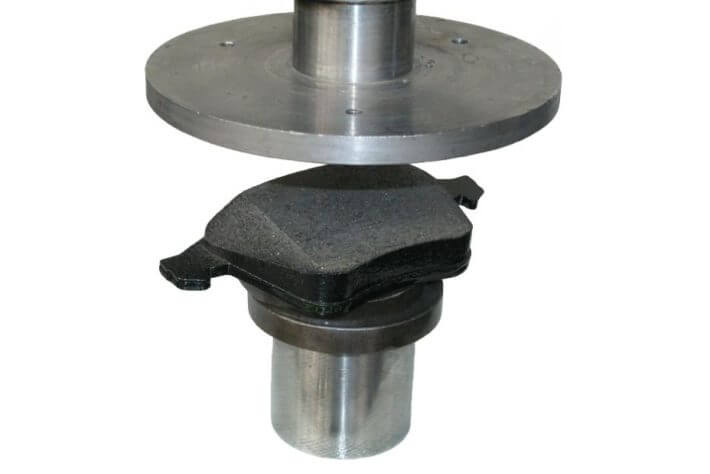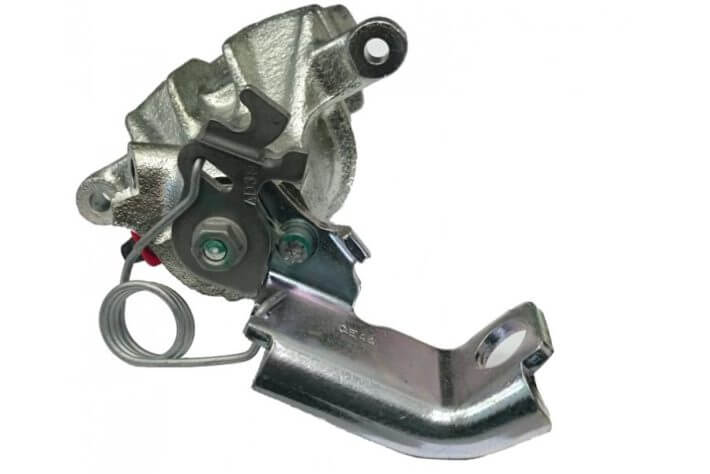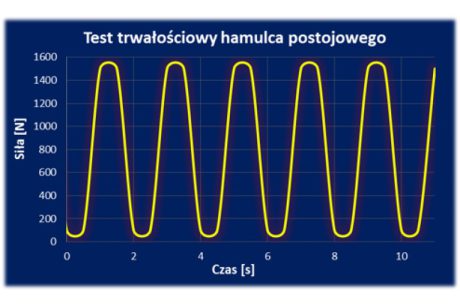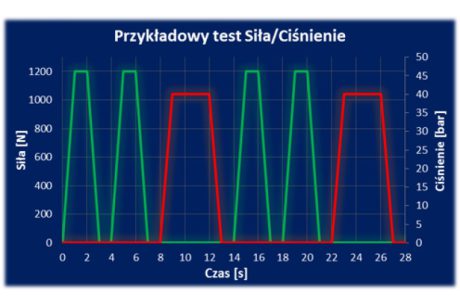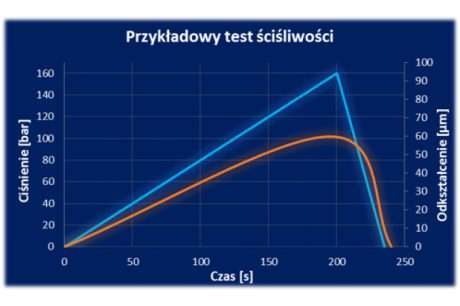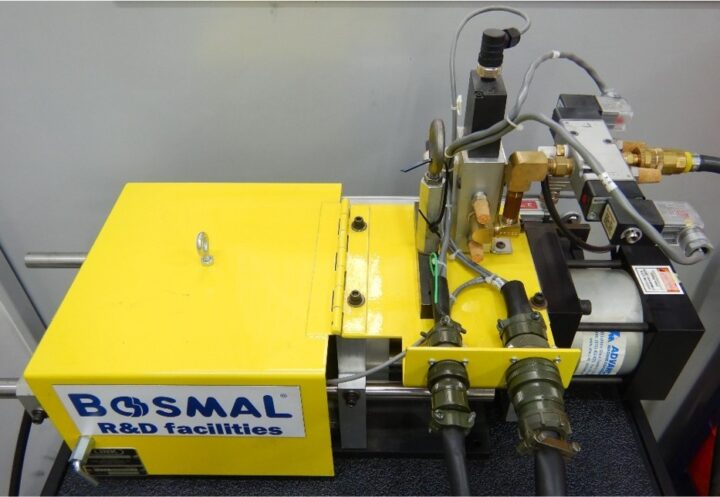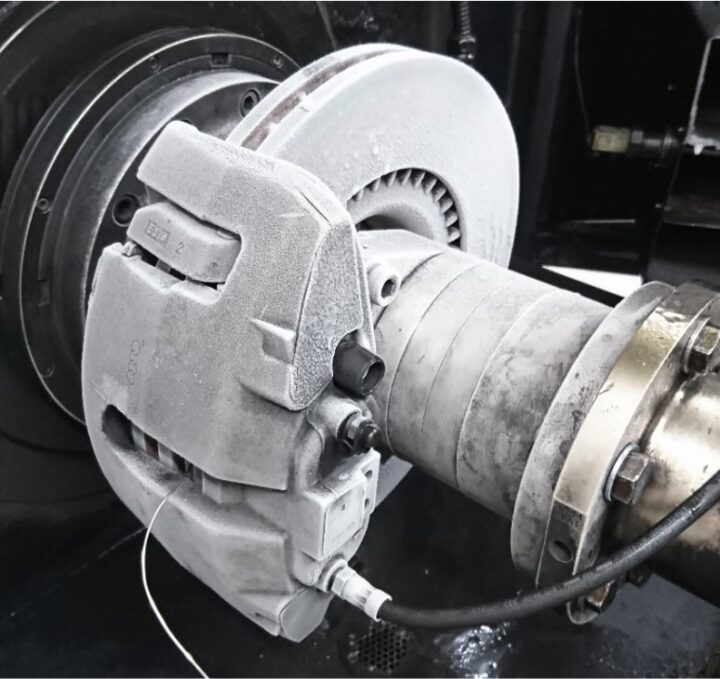Testing braking systems

Testing braking systems on a dynamometer stand (test bench)
Over 40 years’ experience in testing brakes
BOSMAL Automotive Research and Development Institute Ltd has over 40 years’ of experience in testing brakes. During that time, we have performed tests according to many different standards like: SAE, ISO, JASO or manufacturer norms.
We have tested many braking systems over the years including: OEM, ATE, TRW, Brembo, Bosch, Sumitomo, Tokico, Aisin, Akebono, Girling, Teves, Mando, ABS and from many cars like: Porsche, Volvo, Range Rover, Volkswagen, Fiat, Toyota, Suzuki, BMW, Renault, Mercedes-Benz, Alfa-Romeo, Hyundai, Audi, Lancia, Opel, Skoda, Seat and many others. We have experience in testing both disc and drum brakes.
Testing equipment – LINK Model M3000
LINK Model M3000 Brake Dynamometer for brake testing
The dynamometer allows testing of the drum and disc brake systems at full scale in the range of functional tests and durability:
- friction material: brake pads and shoes
- brake drums
- solid and ventilated brake discs of any type and material.
The test bench is adapted to test:
- Conventional hydraulic systems
- Electro-hydraulic systems (SBC)
- Electro-mechanical systems (EBM)
- Hybrid brakes
Technical specification and capabilities of the Dyno:
- DC Drive Motor Power 186 kW
- Speed range 0 – 2500 rpm
- Maximum braking torque 5650 Nm
- Minimum simulated inertia 5 kgm2
- Minimum mechanical inertia 42,7 kgm2
- Maximum mechanical inertia 128 kgm2
- Maximum simulated inertia 250 kgm2
- Maximum brake pressure 200 bar
- Maximum pressure ramp rate 1000 bar/sec
Inertia simulation characteristics
The LINK M3000 brake dynamometer enables the dynamic inertia simulation in the range of 5 kgm2 to 250 kgm2. This means we can test a large range of vehicles from light passenger cars, through heavy SUVs, up to light commercial vehicles. The Dyno can break with braking torque up to 5650 Nm which allows to do 10 m/s2 for all of the mentioned vehicles and much more for some lighter ones.
Data acquisition
The LINK M3000 test station allows to record in real time on time line the following signals:
- Braking torque
- Rotational speed
- Linear speed
- Deceleration
- The pad/shoe temperature
- The disc/drum temperature
- The brake pressure
- Acceleration
- Fluid displacement
- Actual inertia
- Cooling air temperature
- Cooling air flow
- Image from the HD camera
- DTV – disc thickness variation
- Noise peak level
- Noise peak frequency
- Noise peak duration
- and many more.
Data acquisition and analysis
All the signals can be recorded in real time and on timeline. The signals can be stored with the frequency up to 1000 Hz. We offer a full support in analysing the results and comparing them with data obtained on other friction material.
Video image acquisition
The test chamber is fitted with a video camera that allows registration of the video image in real time and on time line. The image is stored in HD quality. There is also a possibility to store the noise and vibrations emitted by the brake.
Static torque system
The static torque system is a low speed, high torque drive device that allows brake static breakaway and creep/groan testing. Up to 5650 Nm of braking torque and 18 rpm speed.
Braking system pressure tests (bench tests)
BOSMAL conducts bench tests – pressure tests – on braking system elements, including:
- pulse pressure tests on various braking system subassemblies,
- destructive hydraulic tests on braking system components (resistance to bursting pressure; see figure on the right),
- tightness tests of connectors in braking systems.
Road testing of braking systems
- Tests of the effectiveness of vehicular braking systems
- Tests of parts’ mountability
Tests of the effectiveness of vehicular braking systems
We conduct:
- Tests to define the braking distance and braking delay, reaction times, forces and other indicators of the braking process
- Tests of standard operating braking systems
- Tests of emergency braking systems
- Tests of hand (parking) braking systems – the ability to hold a vehicle’s position on a slope
- Cars and trucks
- Trailers and semi-trailers
- Hydraulic and pneumatic braking systems
- Tests according to UNECE Regulation No. 13, UNECE Regulation No. 13, UNECE Regulation No. 90
- Tests for type approval of vehicles
- Measurements by means of contactless measurement of distance and speed
Mechanical tests of braking systems (bench tests)
We conduct mechanical tests of braking system subassemblies.
Parking (hand) brake functionality and durability tests
Tests consist of subjecting the mechanical parking (hand) brake lever to a cyclic force.
Shearing tests
Measurements of the force required to tear away the friction lining from the mounting plate.
Compressibility tests
Tests of the susceptibility of the friction material to deformation as a result of force action via the brake caliper.
Hardness tests
Hardness tests of friction elements in braking system using the Vickers, Brinell and Rockwell methods.
Geometric measurements
Geometric measurements of braking system elements. Verification of conformity with the technical documentation.
Accredited testing procedures
Society of Automotive Engineers
SAE-complaint testing
SAE-J2521 – „AK-Noise” – Disc and Drum Brake Dynamometer Squeal Noise Test Procedure
The purpose of the test is to measure the squeals emitted by the brake. The procedure imitates the braking conditions for which the brake being tested has a high tendency to emit noise. The test includes forward and reverse braking modules, braking with deceleration and braking with simultaneous driving at various speed, temperature and pressure conditions.
SAE-J2521 „AK-Noise” B section „cold”
Allowing to test brakes in temperatures down to -10°C
SAE-J2522 – „AK-Master” – Dynamometer Global Brake Effectiveness
This test procedure evaluates the effective indicators of friction material, taking into account the different pressure, temperature and speed conditions for motor vehicles equipped with hydraulic brakes. The main purpose of SAE J2522 is to compare the friction material under possibly similar conditions. To take into account the different characteristics of the brake cooling systems of different dynamometers, the fade section is temperature controlled.
SAE-J2707 – Wear Test Procedure on Inertia Dynamometer for Brake Friction Materials
Dynamometer test procedure used to measure the wear of friction linings of motor vehicles’ brakes.
SAE-J2784 – FMVSS Inertia Dynamometer Test Procedure for Vehicles Below 4540 kg GVWR
The inertia test procedure determines the performance of the complete brake under the conditions corresponding to the FMVSS 105 and 135 test procedures.
SAE-J2928 – Brake Rotor Thermal Cracking Procedure for Vehicles Below 4540 kg GVWR
Laboratory method and criteria to determine the moment of initiation of cracks in the brake disk and their propagation during high energy braking events.
SAE-J2789
SAE-J2986
SAE-J3002
International Organization for Standardization
Tests with accordance to ISO test specifications
ISO 11157 – Road vehicles – Brake lining assemblies – Inertia dynamometer test method
Dynamometer test method to homologate alternative types of brake linings (including pads) mounted on original equipment, in accordance with UN-ECE Regulation No. 13-09, Annex 15.
ISO 15484 – Road vehicles – Brake lining friction materials – Product definition and quality assurance
The procedures apply to disc brake pads and drum brake linings for motor vehicles and describe systematic processes for the quality assurance of such brake linings.
ISO 26867 – Road vehicles – Brake lining friction materials – Friction behaviour assessment for automotive brake systems
This International Standard is designed to evaluate the friction behaviour under a wide array of driving speeds, brake temperatures, brake pressure and deceleration levels.
The Standard describes a test procedure for assessing the influence of pressure, temperature, and linear speed on the coefficient of friction of a given friction material in combination with a specific mating component (rotor or drum).
ISO/PAS 22574
ISO 7629
ISO/PAS 12158
Japanese Automotive Standards Organization
Tests according to JASO standards
JASO C406 – Passenger car – Braking device – Dynamometer test procedures
The test procedure for the Dynamometer performance of normally operated service brake device in passenger cars.
JASO C419 – Passenger cars – Service brake – Structural integrity dynamometer test procedure
This standard sets forth strength methods on service brakes that normally operate in passenger car through the use of an Inertia Dynamometer
JASO C427 – Automobile parts – Brake lining and disc brake pad – Wear test procedure on Inertia Dynamometer
This standard specifies the Dynamometer test procedure for the measurement of wear of brake linings and pads to be used in the service brakes of automobiles.
JASO C436 – Procedura badania na dynamometrze hamulca postojowego
JASO C442 – Parking Brake Structural Integrity Dynamometer Test Procedure
This standard establishes a structural integrity Dynamometer test procedure for parking brakes of automobile.
JASO C443 – Road vehicles – Service brake – Dynamometer simulated mountain fade test procedure
This standard specifies the simulated mountain fade Dynamometer test procedure for normally operating service brakes of automobiles.
JASO C456 – Test Method for Wear Warning Devices
This standard specifies the test method for wear warning devices of brake linings and pads used for the service brakes of passenger cars.
United Nations Economic Commission for Europe
Approval tests according to UN ECE Regulations
Regulation No. 13
Uniform provisions concerning the approval of vehicles of categories M, N and O with regard to braking.
Regulation No. 13-H
Uniform provisions concerning the approval of passenger cars with regard to braking
Regulation No. 78
Uniform provisions concerning the approval of vehicles of categories L1, L2, L3, L4 and L5 with regard to braking
Regulation No. 90
Uniform provisions concerning the approval of replacement brake lining assemblies, drum brake linings and discs and drums for power-driven vehicles and their trailers
Other testing procedures
TD-PrÜfrichtlinie Stand 30.09.2003, ANHANG 3 – p. 4
TD-PrÜfrichtlinie Stand 30.09.2003, ANHANG 1 – p. 3-4, ANHANG 2 – p. 3-4
AMS „Auto Moto Sport” – BOSMAL/I-7-103
BOSMAL/I-7-91
BOSMAL`s own accredited method – allowing to test according to the all the Client’s methods
Powrót
do góry strony

